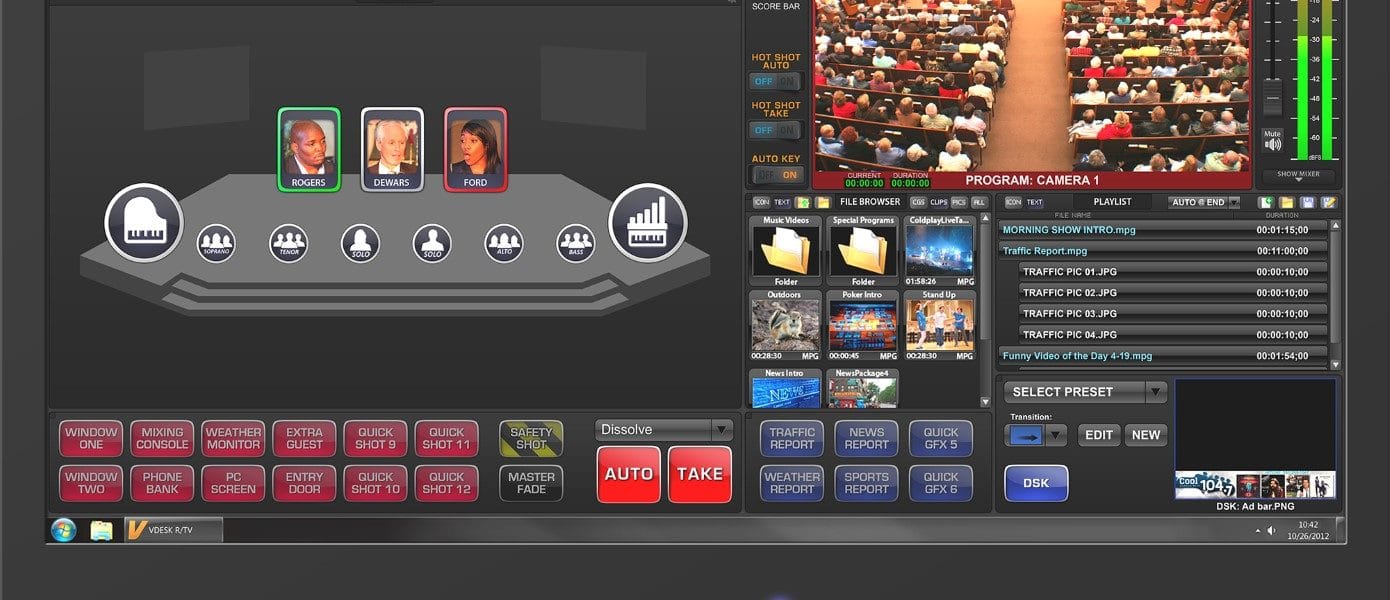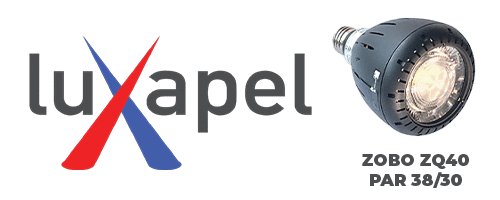It’s common knowledge that it’s difficult to maximize the quality of your video production when you must rely on volunteers to operate the cameras. Your goal is to provide the best audio and visual experience for those watching your video stream, as well as those in the facility where IMAG and sound reinforcement systems should be optimized to enhance the worship experience.
The ascending curve of technology has made it possible to achieve extremely high levels of production quality, while at the same time reducing or eliminating the need for camera operators. This is a win-win scenario, of course, and you should be aware of current solutions that offer robotic video tracking technology at a price that meets your budget.
Your annual operating budget primarily consists of hardware (and attendant hardware depreciation) and labor. If you’re using an all-volunteer camera crew, then labor at that level is obviously zero.
But your level of production value depends heavily on the capability of the volunteers, so these factors must be considered when making budgetary decisions.
The current technology integrated into many pan/tilt/zoom (PTZ) cameras is truly remarkable. Equally remarkable is the price/performance value of these cameras. It may surprise you to know that you can purchase very high-quality HD-PTZ cameras with 30x optical zoom lenses…and noise reduction circuits that virtually eliminate video ‘noise’ in the lowest light situations…for around $2,500.
But WAIT!, as the informercials declare. Included in the price is the ability to track your worship leader as they move back and forth across the stage. Plus, they include a second full resolution HD camera with a wide-angle lens and independent SDI output.
So, in one fixture, you have a PTZ camera, a fixed wide angle camera, and motion-based tracking – three functions in one fixture.
When you combine these features with other available software, you can create a dynamic, professionally produced program with a single operator, and achieve levels of production quality far beyond what you might expect.
And if you’d like to use your favorite non-PTZ production camera on a pan/tilt head, there are now some high-quality, low-cost options.
One of the newest entries with this capability is available in two sizes: one for the current generation of smaller production cameras and ‘box’ cameras, and the other for larger, cinema-style video cameras.
Significantly, these pan/tilt heads can be controlled by RS-422 VISCA connections, as well as by DMX hardware and software. This means you can integrate video cameras into your DMX lighting universe, which opens wide the doors of opportunity for enhancing your coverage and IMAG routing from camera shots designed into your lighting dynamics.
Additional available software supports (1) Dynamic Auto Zoom (user-defined rules for preset and/or continuous slow zooms in and out), (2) motion presets where you set a start and end position and speed for the move, and (3) a touch screen ‘switcherless’ interface that lets you touch-and-take your shots based on a gray-scale rending of your production stage, populated with picture icons of people, musical instruments and singers.
If you want or need more sophisticated production capability for video tracking of multiple individuals and objects, as well as integrated robotic light tracking of the same targets, there are available systems with more robust configurations.
These systems utilize tiny infrared (IR) “tags” with LEDs that are detected by two or three sensor cameras on the perimeter of your production stage. Each tag generates a unique digital signature, so you can track a virtually unlimited number of targets, locked on with high precision in three-dimensional space.
This type of system is considerably more expensive than cameras with auto-tracking based on motion detection, with system prices starting around $15,000. But there is certainly a place for each based on your production environment.
The saying “you get what you pay for” is certainly applicable when choosing the best solution for enhancing the production value of video and lighting in your services.
In general, if your worship leader is just moving back and forth on the stage, and there is little or no background activity when the sermon is being presented, a high-quality PTZ camera with motion-based auto-tracking is adequate. In the accompanying software, you can define the stage area, which is the limit of the ‘walk-and-talk’ tracking area.
You can also create multiple ‘masks’ by drawing rectangles around objects with motion that could confuse the motion sensor in the camera. An example would be one or more IMAG screens behind the worship leader. Proper setup of the active and masking areas is essential for good tracking performance.
By comparison, the tag/sensor configuration receives pinpoint data precision for each tracked object, so there are no requirements for masking or other motion-based anomalies.
With the proper system, you can track objects not only with PTZ cameras, but also with robotic light fixtures. Just assign one or more cameras and one or more lights to any person or object and everything tracks automatically when Auto Tracking is activated.
You can use this kind of system with any production switcher, taking the video output of the cameras to the switcher inputs. Since you always have good ISO shots of the tracked objects, you just monitor all the cameras in a multi-viewer and take shots at your discretion.
Some systems further support ISO recording of all the cameras, so you can easily load the synchronized files in your NLE for post-production editing.
And finally, there are some interesting available software utilities that are worth considering. These are workflow tools that can reduce your pre-production prep time and increase your efficiency.
For example, there is a text editing and formatting utility that converts meeting agenda – or worship service program items – into PNG files for use with many video production systems.
There are also inexpensive but powerful file transcoding software solutions than recognize over a dozen different video file types and can convert them into H.264 or MPEG-2 files. During the conversion, the software will optimize the audio levels for consistent output, making your job a lot easier if you’re using file playback in your worship software or video production systems.
One such system also includes a simple but powerful video file segmenting program where you can trim the start and end of video files, and create virtual or actual sub-clips for playback in your service production.
Since technology evolves so quickly, it’s always good to be aware of what’s available. Only if you’re educated and informed can you make budgetary and operational decisions that keep you “on track,” enhancing your production capability and increasing your efficiency when preparing for and producing an excellent service program.
Rush Beesley, a technology pioneer since the early 1970s, founded RUSHWORKS to fulfill the need for versatile, reasonably priced integrated media solutions that increase productivity, profitability, and return on investment. Beesley and RUSHWORKS have designed and provided over a dozen solutions appropriate for many diverse market sectors, www.rushworks.tv.















